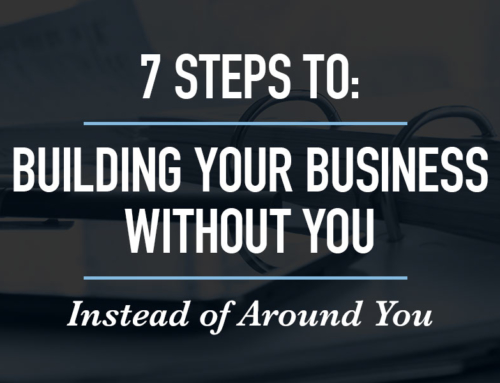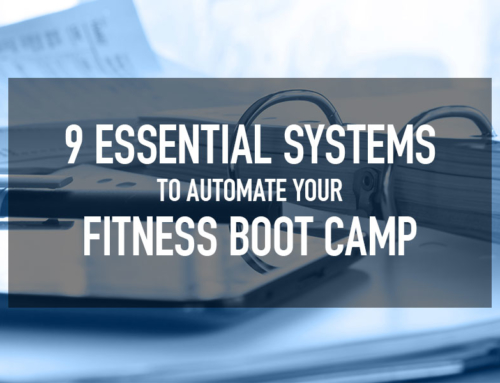“A real business operates without you, not around you.”
It’s every personal trainer’s dream to own their own personal training studio or boot camp. A lot of personal trainers go for it, and some are successful and make a decent living.
But only a few create a real business.
What I mean by a “real business” is a business that is created without you, instead of around you.
You see, most trainers, when they start their own fitness business, it’s just them. There is nothing wrong with this and it’s how most trainers have to start. When it’s just you, you don’t really own a business, you own a job!
You have to open and close everyday, clean, fix equipment, train clients, program workouts, bookkeeping, follow up on leads, sales consults, nutrition consults, network with other businesses, write articles and press releases, marketing… and so on.
After a few months or years of getting up at 4:30am and going to bed after 10:00pm you start to get burnt out. You can forget getting married or having a child. That kind of lifestyle just won’t cut it. Not to mention, you haven’t built a business that you can scale or eventually sell.
Ask yourself this question; How long would my business survive if I were to just disappear? If you said less than a day, congratulations you own a job.
A real business operates without you, not around you.
I realized this once my daughter was born. I had to find a solution quick. There was no way I could keep up with a 4am – 10pm daily schedule and be a Dad at the same time.
In this article I want to teach you how to pull yourself out of your business so that you can automate, delegate, and scale your fitness business.
1. Get It Out of Your Head
The first thing you need to do is get everything you do, out of you head, and onto paper. Grab a notebook and for a minimum of one week write down every task you do in your fitness business.
Write everything down before you do it. Once you get everything out of your head and on paper you want to categorize each task.
2. Categorize
Each task is going to have 3 labels. One is you are either going to enjoy the task or don’t enjoy the task. Two is you will be good at the task or not good. And three is the task will either energize you or drain you.
Once you have labeled the task you will look for the ones that you are good at, enjoy and energize you. These are the tasks you will continue to do the longest. Then you will look for the tasks you are not good at, don’t enjoy, and drain you. These task you will find someone else to do first.
3. Operations Manual
Before you hire or barter with someone to do those tasks, you want to put the instructions or steps into a manual. This will be the beginning of what will become your operations manual.
Here what you should do and some things you should include when creating your operations manual.
Let’s use something simple like opening up your fitness studio as an example. Don’t assume anything. Make sure you add every little detail like; unlock the door, turn on the lights, turn on the computer, set the music station to this channel, set up for the first client or group session…. And so on.
Don’t leave anything to question. Remember, this should be so detailed that anyone could pick up your manual and run your business.
4. Checklists
You want to have a closing checklist as well (should be the exact opposite of your opening one).
- You should include workout program design. Have a list of approved exercises for your trainers to choose from.
- You should have a daily activity checklist (all the things you did on a daily basis), a weekly activity checklist and a monthly or quarterly checklist.
- You can break the daily activity checklist up into the trainer’s daily checklist and admin daily checklist and so on.
- You want to have call scripts in there so you employees know exactly what to say when calling potential clients, or following up with current clients or when trying to get old clients back.
- You should have a frequently asked question section that has the most asked questions with how you would answer them.
- You need to have a rolodex with all the services you use. Like: your Land Lord’s number, your air conditioning company, plumber, handyman, internet company, utilities and so on.
That way, if anything were to break or go wrong when you weren’t there, your employee’s would know exactly what to do.
5. Systems
You also need systems for:
- Generating new leads
- Following up on leads
- Setting sales appointments
- Onboarding
- Retention
6. Policy and Procedures
You need a policy and procedures handbook. In this manual you will include things like what your trainers need to do in order to get time off, or what to do if a client were to get injured, what they should or shouldn’t do when it comes to social media.
It’s also a good idea to list what your IP (intellectual property) and trade secrets are and how they are not allowed to infringe on those if they were to leave your business. This would include things like your email list, Facebook fans, your training methodology, and your sales and marketing systems and processes.
This is tedious work that you never really finish. It will keep evolving just like your business will. So just get started and don’t think to much into it. You want to make sure you keep it up to date.
It is really important to have these things in place if you want to create a real business that operates without you.
Once you create a real business, one that is automated, you can then start hiring people and delegating so you can scale your business, open multiple locations and create the lifestyle you always dreamed of for yourself and your family.





